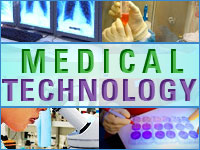
Nanomachines are, simply, very small machines, and the goal of medical nanotechnologists is to create these tiny machines in order to treat diseases at the molecular level.
The body, however, already has plenty of its own nanomachines in the form of proteins that assemble themselves to transform their environment. Proteins are composed of long amino acid chains, and these have evolved over eons to be able to quickly self-assemble into natural nanomachines.

When protein-assembly goes well, it does such vital work as activating the awareness of food or danger in response to certain odor molecules. In some diseases, however, such as Alzheimer’s and Parkinson’s, proteins fail to assemble properly. The body’s natural nanomachines, in other words, break down.
Two scientists, University of Montreal professor of biochemistry Stephen Michnick and University of California, Santa Barbara postdoctoral nanotechnologies researcher Alexis Valle-Blisle, have developed a new method of visualizing, monitoring and documenting protein-assembly. Their work, recently published in the journal Nature Structural & Molecular Biology, could further the understanding, diagnosis and treatment of diseases caused by protein-assembly errors.
“Proteins don’t just get reproduced,” Michnick told TechNewsWorld. “They get transformed and changed, in both normal and pathological ways — as in Alzheimer’s and other neurodegenerative diseases. The problem is to understand how protein changes; you have to follow the process of becoming.”
Taking Snapshots
By inserting a naturally existing fluorescent probe, tryptophan, into polymer sequences, Michnick and Valle-Blisle were able to track and document the process of protein assembly, or protein folding. They call their detection process “tryptophan scanning mutagenesis.”
“What we did is incredibly simple,” said Michnick. “We put an antenna into the surface of the protein to monitor it as it transformed from an unfolded to a folded-up state. No one has ever done it like this. People have inserted single probes, but that’s like having only one relay tower for a cellphone system. We’ve set up a whole relay system that tells us what’s happening all over the protein.”
Their research demonstrates that this method can be used to track in detail the stages of protein assembly.
“We discovered that you can distinguish very clear steps in this process,” explained Michnick. “Some of the proteins hang out for a while and look around and search for things to do, before they settle down to become part of the whole.”
Essentially, they took snapshots of the incredibly quick process and were able to document it, step-by-step.
“To understand how a protein goes from a linear chain to a unique assembled structure, we need to capture snapshots of its shape at each stage of assembly,” said Valle-Blisle, the study’s first author.
“We developed a strategy to monitor protein assembly by integrating fluorescent probes throughout the linear protein chain so that we could detect the structure of each stage of protein assembly, step-by-step to its final structure.”
Real-World Applications
The work of these scientists might eventually be applied in the medical field to diagnose and treat diseases such as Alzheimer’s.
“Protein machines accomplish amazing tasks at a nanometer scale that cannot be reproduced by today’s engineers,” Valle-Blisle told TechNewsWorld.
“Understanding how a protein goes from being one thing to becoming another is the first step towards understanding and designing protein nanomachines for biotechnologies such as medical and environmental diagnostic sensors, drug synthesis or delivery,” he explained.
The study’s authors don’t intend to patent the process — rather, it’s available for other researchers to use in their own work.
“This is something that is perfectly open,” said Michnick. “It’s not something we would build a patent around. It’s a conceptual step, a conceptual leap.”
Nanomachines hold much promise in the field of medicine, and this work will help to further their development, noted Valle-Blisle.
“All of these machines are currently inspiring the next technological revolution, which will be at the nanoscale. For example, in a near future, nanomachines will be developed to deliver chemotherapeutic drugs specifically to tumor cells without killing healthy cells. So understanding how natural protein nanomachines assemble will help us as engineers to build similar technology for many new applications,” he explained.
“Having a new approach to monitor protein folding or misfolding will also greatly improve our ability to understand protein-folding diseases such as Parkinson’s and Alzheimer’s, and thus help us to find cures,” added Valle-Blisle.
The research does hold some promise in the field of medical nanotechnology, said Tim Harper, CEO of Cientifica.
“Being able to take a sequence of snapshots of protein assembly gives us the ability to understand much more about the processes involved, and that is quite a change from simply observing a static sample,” Harper told TechNewsWorld.
“Many diseases are caused by one of these processes not happening correctly, but if we don’t understand the difference between a healthy process and one that indicates disease, we are working blind,” he said. “If, as a result of this work, we can tell the difference between healthy protein assembly and processes which are anomalous, we can start to think about using this as a diagnostic tool.”
How the technique is applied, ultimately, is up to other researchers and nanotechnology engineers.
“It’s only limited by the creativity of researchers who would choose to use it,” Christopher von Roretz, bionanomachines program coordinator with Create Training Program in Bionanomachines, told TechNewsWorld. “If we know how a protein folds, that can reveal to us the mechanism of how that protein works, and how we can target that protein.”





















































